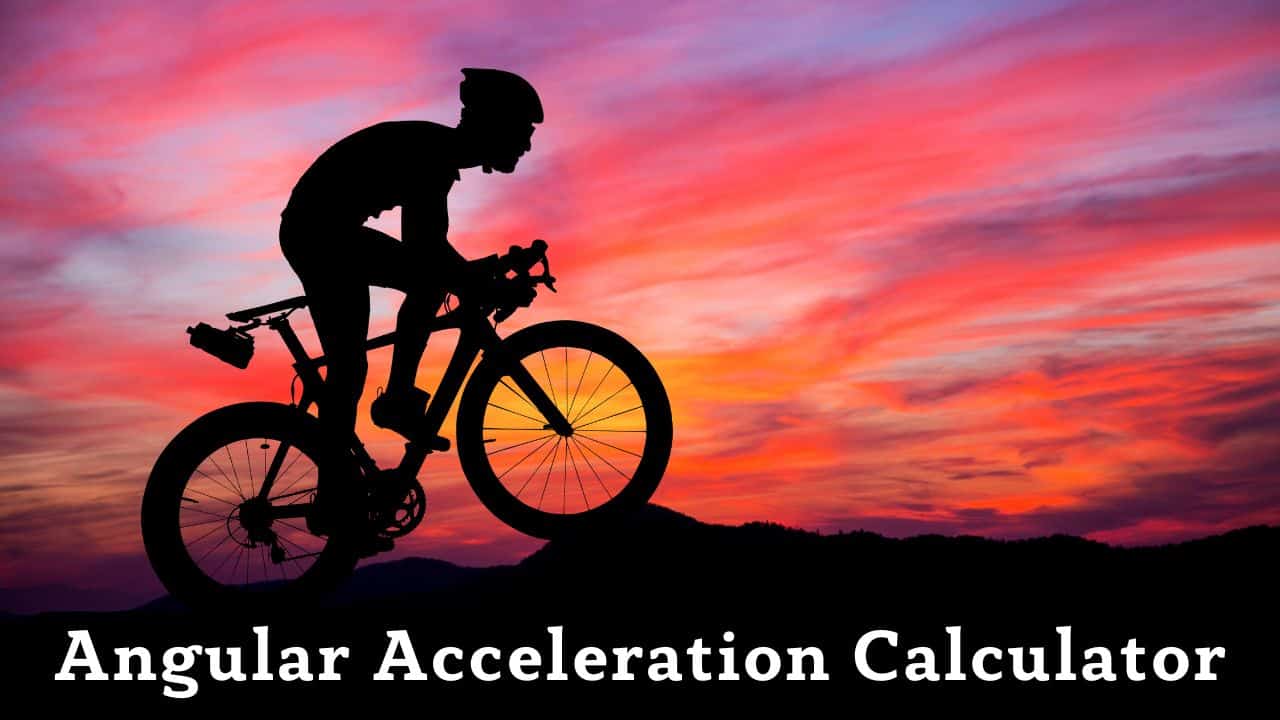
What is Angular Acceleration?
Think of angular acceleration as the “speeding up” or “slowing down” of rotation. Just like linear acceleration tells us how velocity changes with time, angular acceleration (α) tells us how angular velocity changes with time. When you start a bicycle wheel spinning or apply brakes to a car, you’re creating angular acceleration.
Key characteristics of angular acceleration:
- Vector quantity: Has both magnitude and direction (clockwise or counterclockwise)
- Rate of change: Measures how angular velocity changes over time
- Units: Measured in radians per second squared (rad/s²)
- Analogous to linear acceleration: Same mathematical relationships apply to rotational motion
📐 The Fundamental Formula: α = Δω/Δt
The basic formula for angular acceleration is beautifully simple and mirrors linear acceleration. Let’s break down each component:
Understanding α = (ω – ω₀)/t:
- α (alpha): Angular acceleration – how fast the rotation is changing
- ω (omega): Final angular velocity – where the rotation ends up
- ω₀ (omega naught): Initial angular velocity – where the rotation started
- t: Time interval – how long the change takes
This formula tells us that if you know any three of these quantities, you can always calculate the fourth. It’s the foundation for solving countless rotational motion problems in physics and engineering.
⚙️ The Torque Connection: τ = Iα
One of the most powerful relationships in rotational mechanics connects torque, moment of inertia, and angular acceleration. This is Newton’s second law for rotation!
Breaking Down τ = Iα:
- τ (tau): Torque – the rotational force applied to the object
- I: Moment of inertia – how the object’s mass is distributed relative to the rotation axis
- α: Angular acceleration – the resulting change in rotational motion
This relationship explains why it’s harder to spin up a heavy flywheel than a light one, and why figure skaters spin faster when they pull their arms in – they’re changing their moment of inertia!
Real-World Examples and Applications
Example 1: Car Engine Startup
Scenario: A car engine accelerates from 0 to 3000 rpm in 2 seconds
Calculation: ω₀ = 0, ω = 3000 rpm = 314.16 rad/s, t = 2 s
Result: α = (314.16 – 0)/2 = 157.08 rad/s²
Real meaning: This high angular acceleration requires significant torque from the starter motor
Example 2: Bicycle Wheel Braking
Scenario: A bicycle wheel spinning at 10 rad/s stops in 3 seconds
Calculation: ω₀ = 10 rad/s, ω = 0 rad/s, t = 3 s
Result: α = (0 – 10)/3 = -3.33 rad/s²
Real meaning: The negative sign indicates deceleration (slowing down)
Example 3: Figure Skater Spin
Scenario: A skater pulls arms in, changing moment of inertia from 2.5 to 1.0 kg⋅m²
Physics: Angular momentum conservation: I₁ω₁ = I₂ω₂
Result: If initially spinning at 2 rad/s, final speed becomes 5 rad/s
Real meaning: No external torque needed – conservation of angular momentum does the work!
Angular Kinematics: The Complete Picture
Just like linear motion has kinematic equations, rotational motion has its own set of powerful equations that relate angular displacement, velocity, acceleration, and time.
The four fundamental angular kinematic equations:
- ω = ω₀ + αt – Final angular velocity
- θ = ω₀t + ½αt² – Angular displacement with constant acceleration
- ω² = ω₀² + 2αθ – Velocity-displacement relationship
- θ = ½(ω₀ + ω)t – Average velocity method
These equations are your toolkit for solving any rotational motion problem where acceleration is constant. They work exactly like their linear counterparts but with angular quantities.
